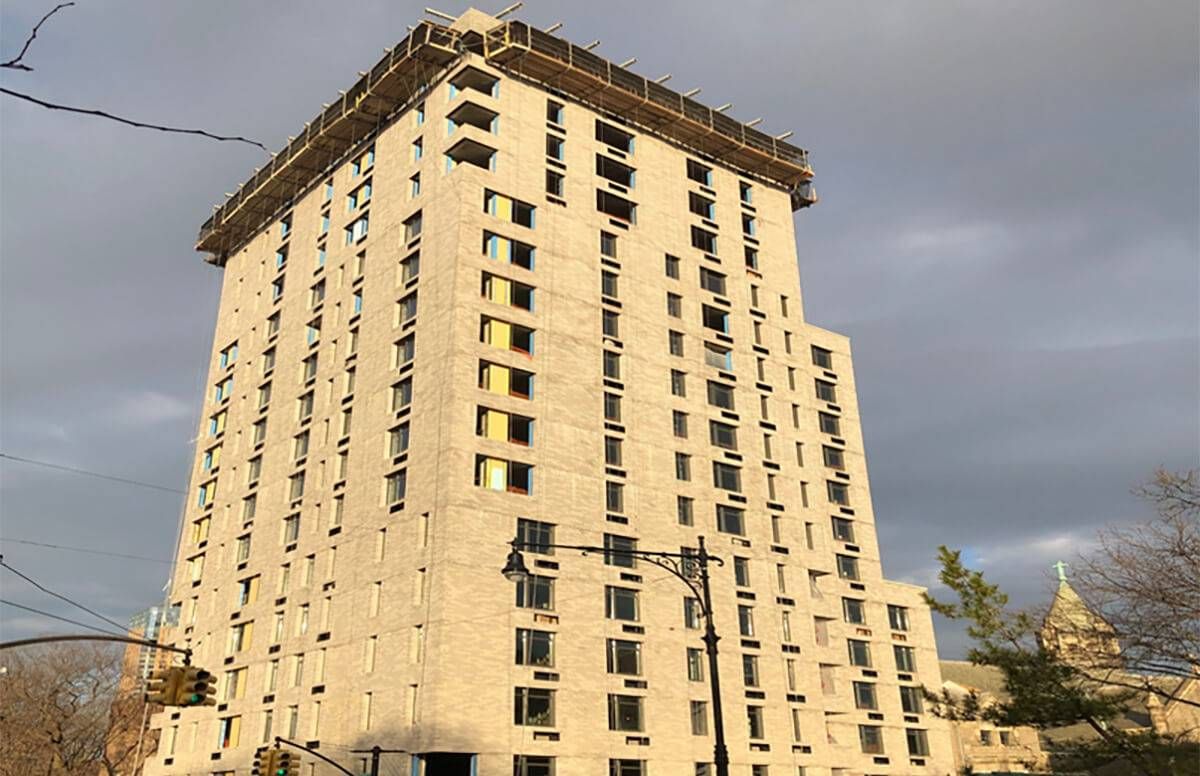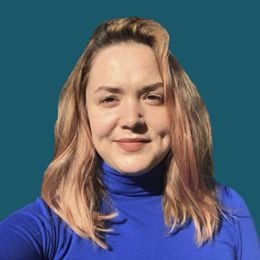The Nation’s Largest LGBTQ-Inclusive Affordable Housing for Older Adults
In the heart of Brooklyn, a community in great need is welcomed home
When applications opened for New York City’s first affordable housing property for LGBTQ older adults recently, 1,000 people eagerly sent theirs in on that first day.

This underscores a genuine need. Not only is New York City increasingly unaffordable, but LGBTQ older adults run up against pervasive barriers when trying to find a place to live.
A 2014 report by the Equal Rights Center found that near half of LGBTQ couples applying for senior housing were subjected to discrimination, and a quarter of transgender older adults report housing discrimination on the basis of gender identity.
In response to these alarming findings, the LGBT older adult advocacy group SAGE embarked on a National LGBT Elder Housing Initiative. Part of this included building New York City’s first (and eventually second) property specializing in housing LGBTQ older adults: Ingersoll Senior Residences in Brooklyn’s Fort Greene neighborhood.
"Those courageous activists need to benefit from this type of housing."
Cities like Minneapolis, Philadelphia, Chicago and Los Angeles already have LGBTQ-inclusive housing for older adults. New York’s Ingersoll will be the largest in the nation. A second New York City property in the works, Crotona Senior Residences, will feature 83 apartments of affordable housing for LGBTQ older adults.
Building LGBTQ Senior Housing in NYC
Ingersoll’s developer, BFC Partners, has been working with SAGE for the past eight years to find the right site for the project.
“When [SAGE] and I partnered, I learned an enormous amount about why this type of housing is so critical today to this community,” said Don Capoccia, principal of BFC Partners. “I’m a member of the community myself. I understood it really well.”
Capoccia says housing — even affordable housing — for older adults is geared toward conventional families. And when an older adult looks for housing services, they’re often asked traditional questions about marriage, children, husbands and wives, fathers and mothers, feeling pressured to hide their identity to avoid discrimination.
“When this dawned on me, I thought about how these are the same people who started the fights for our rights 50 years ago. To see them now in their late 60s and early 70s having to go back into the closet after living a really incredible life with a lot of courage and strength — to see them conceal their identity again — I’d like to have a small hand in trying to address that. Those courageous activists need to benefit from this type of housing,” Capoccia says.
Ingersoll Senior Residences is located in the Fort Greene neighborhood of Brooklyn. That's an area considered part of downtown Brooklyn, with a large concentration of LGBTQ people. SAGE describes Fort Greene as “an area in desperate need of affordable housing.”
“It’s a great neighborhood and a changing neighborhood,” says Latisha Millard-Bethea, director of resident services and the NYC housing initiative for SAGE, who grew up in Fort Greene in the 1980s. “There’s a lot of gentrification going on, but I think Ingersoll will bring a different culture and a different vibe that it really needs.”
Millard-Bethea says there is an existing LGBTQ community in Fort Greene, but it’s “not spoken for.”
She adds: “When we bring in Ingersoll, we’ll integrate the communities.”
New York City Council Majority Leader Laurie Cumbo’s office helped over 200 older adults apply for housing at Ingersoll. The property is within her district.
“Many participants were cheerful and echoed a sentiment I proudly agree with: inclusivity,” Cumbo said in an email. “My office will work to assist as much as possible in the process and continue to be a strong ally of both the LGBTQ+ and senior community.”
Requirements and Amenities
Anyone 62 or older who is income-qualified for affordable housing in New York City can apply to live at Ingersoll. The property is LGBTQ-friendly but not LGBTQ-exclusive. Once Ingersoll reaches 2,000 applicants, the process will close and the Mutual Housing Association of New York will interview qualified candidates to determine eligibility.
Of 145 total units, Ingersoll has 40 studio apartments meant for one person and 68 one-bedrooms for one to two people (say a tenant and spouse) — one of which must be 62 or older.
Much like the five SAGE Centers across New York City, the first floor of Ingersoll Senior Residences will be a SAGE Center, offering social activities and programs for those inside and outside of the community.
“It’s a community-based organization that provides lunch, services and a place for people to talk about benefits, questions and concerns,” says Millard-Bethea. “There will also be an on-site social worker, and community activities like groups and trips.”
SAGE will work directly on hiring building staff who are culturally competent and receptive to the needs of LGBTQ older adults.
“SAGE will develop an orientation for employees so that they understand what a senior LGBT household looks like, how it functions and what they can expect, so that there are no surprises,” Capoccia says. “We want to be sure the building service workers are as welcoming to our tenants as we are. We won’t accept anything less than that.”
Residents will move into the historic Ingersoll Senior Residences the second week of September.


